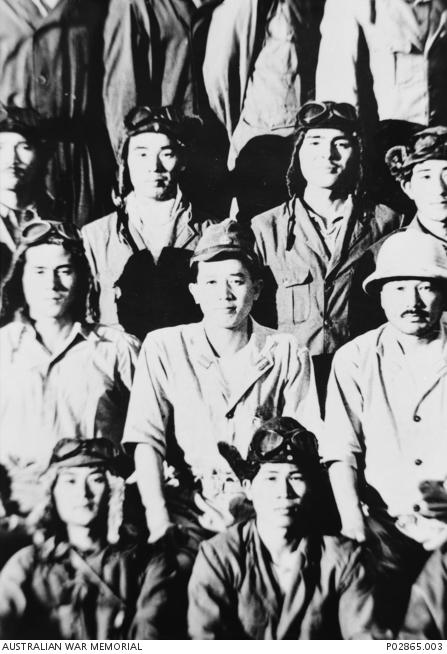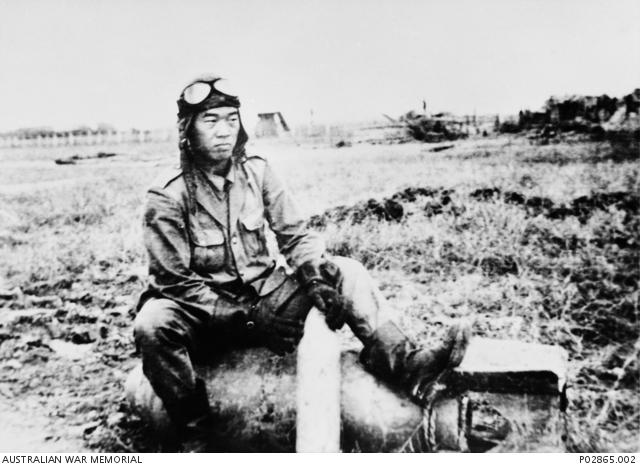Naval Air Pilot First Class Saburō Sakai

Japanese Imperial Navy pilots in Rabaul, New Britain, 4 August 1942. Naval Air Pilot First Class Saburō Sakai stands second from the left, AWM P02865.003
Saburō Sakai enlisted in the Japanese Imperial Navy on 31 May 1933 at the age of 16. He served aboard the Japanese battleship Kirishima and worked his way up the ranks to leading seaman. In 1937 he applied for pilot training school. He was accepted and graduated first in his class. The following year he was sent to China as a combat pilot and later joined the Tainan Air Group.
On 22 July 1942 Saburō took part in a fierce dogfight with an Australian Hudson bomber, flown by Pilot Officer Warren Cowan. Rather than attempt to evade the nine Japanese Zero planes, the Hudson made a sharp U-turn and came straight at the Zeros with all guns blazing. Years later Saburō recollected:
I saw the gunner throw his hands up and collapse. I closed in and held the gun trigger down, aiming for the right wing. Seconds later, flames streamed out and spread to the left wing.
The aircraft caught fire and crashed in the jungle near Buna, Papua.
One month later Saburō was shot in the face, leaving him blind in his right eye and paralyzed down his left side. He was hospitalised for five months. Though he never regained vision in his right eye, he returned to service as a pilot, becoming one of the most famous Japanese flying aces, and shooting down more than 60 Allied planes.
Many years after the war’s end, Saburō asked Australian researchers to help him identify the then unknown Australian pilot and crew he had shot down in July 1942. In 1997 he wrote to the Australian government, recommending that Warren be “posthumously awarded your country’s highest military decoration”. Saburō passed away at the age of 80 in 2000.
Activities
- After the war, Saburō Sakai established close friendships with some of the people he had fought against. What does this tell us about the relationships that can be established between enemies after a conflict?
- This is the plane that Saburō flew in his battle with the Australian aircrew on 22 July 1942. Why do you think it was so important for Saburō to have Cowan recognised for his bravery?

Saburō Sakai’s Mitsubishi A6M2 Zero Fighter Aircraft, AWM REL/08378
- This photo shows Saburō sitting on a 500-pound US bomb. Some sources say this photo was taken in Hankow, China, in 1938, while others say his clothing suggests a later date and a different location, possibly the Philippines. What do these viewpoints tell us about the interpretation of primary sources?

Naval Air Pilot First Class Saburō Sakai, AWM P02865.002